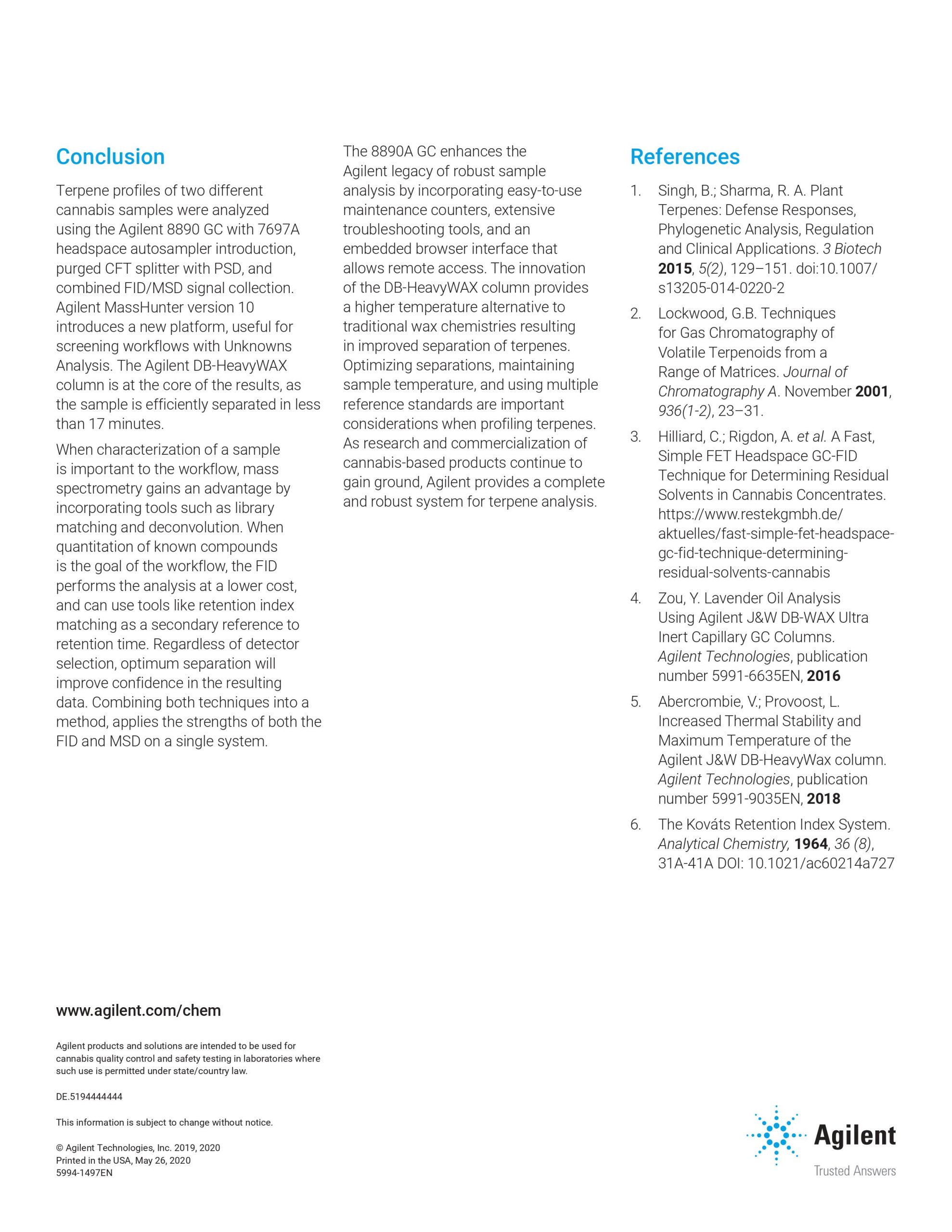Terpenes and terpenoids are compounds produced by botanical species to flourish in their environment. The compounds often attract pollinators, repel pests, and assist with adaptation throughout a growth cycle.1 Chemically, terpenes are comprised of carbon and hydrogen atoms, and are built from isoprene (C5 H8 ) subunits. Terpenoid describes a larger class of molecules that include oxygen in the chemical structure. Both classes of compounds will be generalized to terpenes for this application note, but they are two distinct classes in the broader scope. Terpenes have an associated fragrance, and have historically been isolated from various botanical sources for a wide range of commercial or therapeutic uses.2 D-limonene is a common component of citrus-scented personal care or disinfecting products, eucalyptol contributes to the minty aoma in many therapeutic products, and linalool is largely responsible for the floral fragrance of lavender-scented products. These terpenes, along with others produced by cannabis plants, are of interest as they are commonly marketed to enhance effects in the population consuming cannabis for medicinal or recreational use. The information obtained in terpene profiling helps determine how the plant might be optimally commercialized, as well as providing valuable feedback to the growers for establishing and maintaining consistent plants. The Agilent 8890 GC system, including an Agilent 5977A series single quadrupole mass selective detector and an Agilent 7697A headspace sampler for sample introduction can easily separate, identify, and quantify the terpenes in a given sample. It also provides an enhanced operating experience, maintenance tracking, and on-board diagnostics, accessed through the touch screen interface or through an integrated browser interface.










 Tiếng Việt
Tiếng Việt
